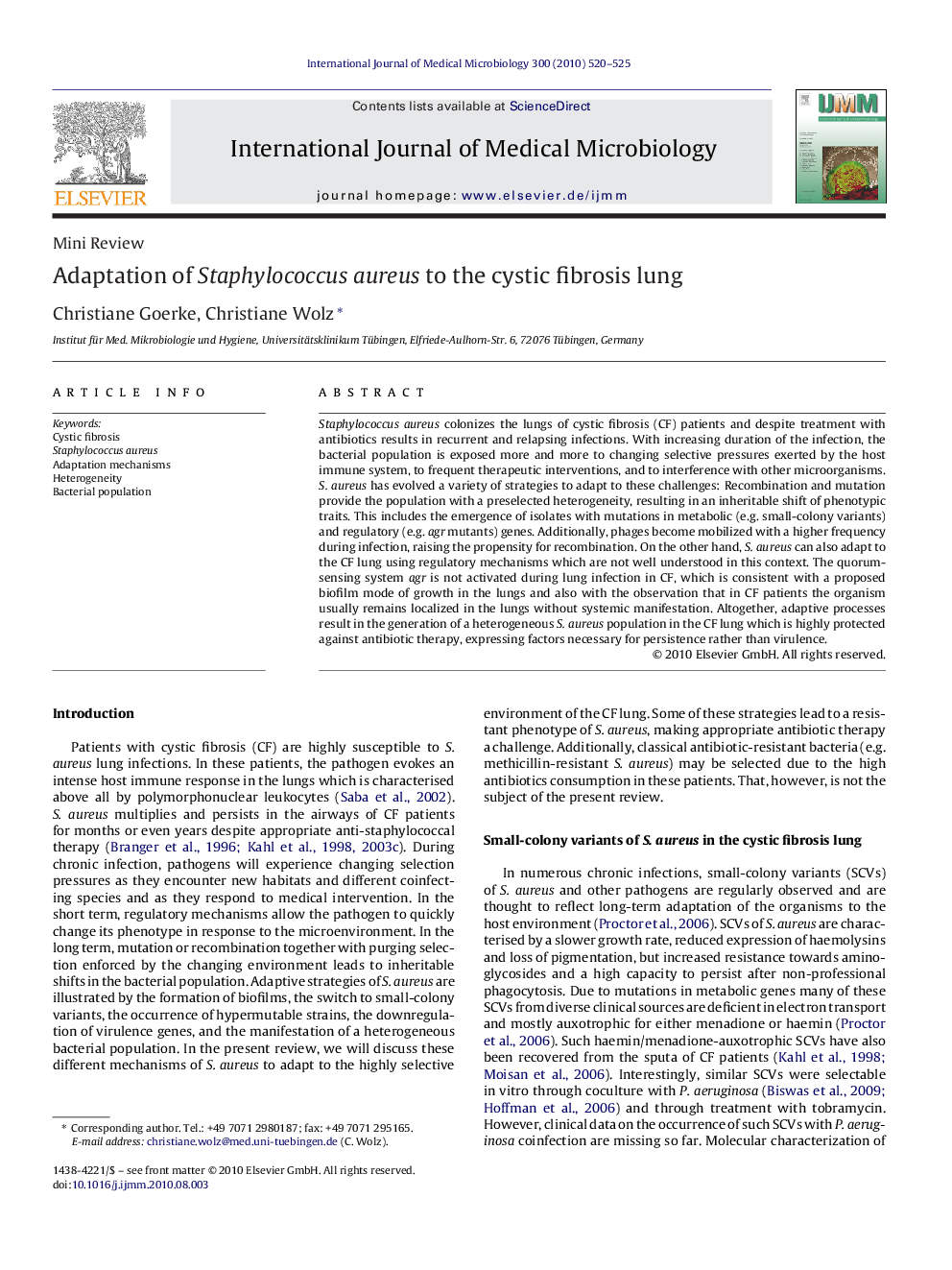| Article ID | Journal | Published Year | Pages | File Type |
|---|---|---|---|---|
| 2054865 | International Journal of Medical Microbiology | 2010 | 6 Pages |
Staphylococcus aureus colonizes the lungs of cystic fibrosis (CF) patients and despite treatment with antibiotics results in recurrent and relapsing infections. With increasing duration of the infection, the bacterial population is exposed more and more to changing selective pressures exerted by the host immune system, to frequent therapeutic interventions, and to interference with other microorganisms. S. aureus has evolved a variety of strategies to adapt to these challenges: Recombination and mutation provide the population with a preselected heterogeneity, resulting in an inheritable shift of phenotypic traits. This includes the emergence of isolates with mutations in metabolic (e.g. small-colony variants) and regulatory (e.g. agr mutants) genes. Additionally, phages become mobilized with a higher frequency during infection, raising the propensity for recombination. On the other hand, S. aureus can also adapt to the CF lung using regulatory mechanisms which are not well understood in this context. The quorum-sensing system agr is not activated during lung infection in CF, which is consistent with a proposed biofilm mode of growth in the lungs and also with the observation that in CF patients the organism usually remains localized in the lungs without systemic manifestation. Altogether, adaptive processes result in the generation of a heterogeneous S. aureus population in the CF lung which is highly protected against antibiotic therapy, expressing factors necessary for persistence rather than virulence.
